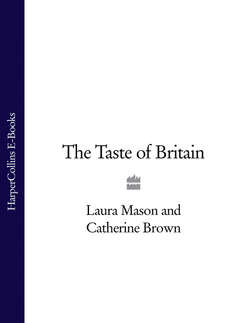Читать книгу The Taste of Britain - Hugh Fearnley-Whittingstall - Страница 359
WELL-FLAVOURED, WHITE FLESH WITH A JUICY, SUCCULENT TEXTURE. THERE ARE SEVERAL VARIETIES DISTINGUISHED BY THE COLOUR OF THEIR PLUMAGE, WITH PALE FEATHERS GENERALLY BEING FAVOURED IN THE LAST 100 YEARS. HISTORY:
ОглавлениеThe history of poultry—for meat or for eggs—is not especially long or glorious in Britain. It was a matter of the barn-door fowl and the farmer’s wife tending a small flock, with little specialization or arcane skill. Cookery books often contained instruction on fattening or cramming, but the almost sacerdotal tending of birds for the table undertaken in France or Belgium was not at first widespread in this country. The agriculturalist William Marshall (1796) noticed that none of the poultry of Devon was shut up at night or in any way confined so as to harvest the egg crop. At that time, the district around Berwick-upon-Tweed (Northumbria) was an important source of eggs for the London market. Scottish routines for extending the laying day were more advanced than those of the South-West. Indeed, it was only at the beginning of the twentieth century that a market for ‘fresh-laid’ eggs was identifiable in any way. More than 2 billion eggs were imported into Britain in the year 1900, some from as far away as Eastern Europe—hardly fresh.
There was no great distinction between breeds of British chicken until the nineteenth century and most of those that were distinguished were of foreign origin. Hence, the Poland was Dutch and the Cochin was from Shanghai, to name two that commanded remarkable prices for their ornamental value. Two varieties represented indigenous English stock: Indian Game and the Dorking. The Dorking fowl was unique in having 5 toes. Its flesh was white, and it was the most famous table bird produced for the London market. There were other Surrey varieties, all related (but none having the extra toes), and this is indication enough that the existence of a large market stimulated the development of breeds specific to its requirements. At the first Poultry Breeders’ Show, held in London in 1845, there were classes for Dorkings, Surrey, Kent and Old Sussex fowls.
The Dorking’s origins have been pushed back to the time of the Roman occupation, in myth at least. The Roman agricultural writer Columella did indeed give a description of a five-toed bird which closely resembles it in colour and form. A thousand years later, the early history of the race and its place of origin were still in dispute between the poultrymen of Sussex and Surrey: each county claiming to be the motherland. The facts have never been capable of resolution and the likelihood is a common source for most South-Eastern birds. As London spread over the Surrey hills, so the rearing and fattening of fowl extended towards the county of Sussex, particularly the area around Heathfield. There arose a Sussex system of cramming, with oats ground between millstones tooled for the purpose, mixed with hog’s grease, sugar and milk—this survived until 1939-45. Not all the birds so fattened were of Dorking, Surrey or Sussex descent. Many were imported from Ireland for finishing closer to the point of sale. The fatteners also surgically caponized some of their flock to produce the famous ‘Surrey Capons’.
A breeders’ club for Sussex chickens was formed in 1903 and three varieties—light, speckled and red—were standardized. Other plumage colours, some gender-linked, have been developed over the years. The Sussex has also been much crossed with other varieties of British chickens. It was used with the Indian Game (which, despite its name, has been bred in Britain for centuries) in the 1930s to develop the Ixworth, a bird which has been neglected commercially despite having excellent qualities.
The impact of the Second World War on food production in general and the introduction of commercial broiler-chicken systems from the USA started a decline in traditional poultry farming which is not yet arrested.
